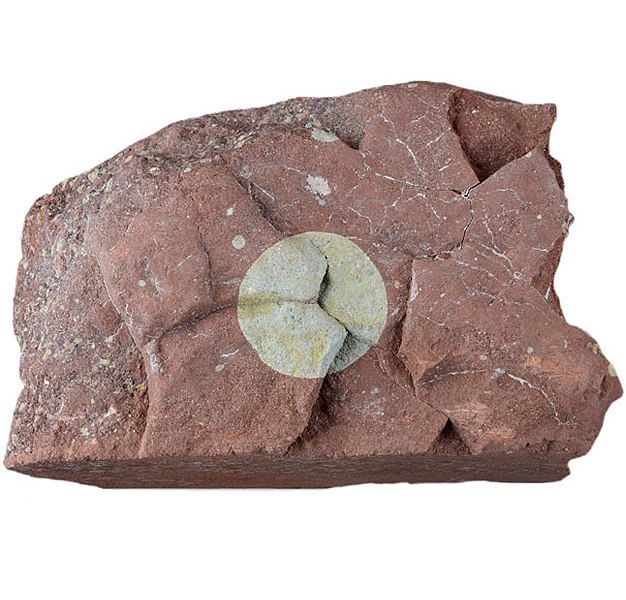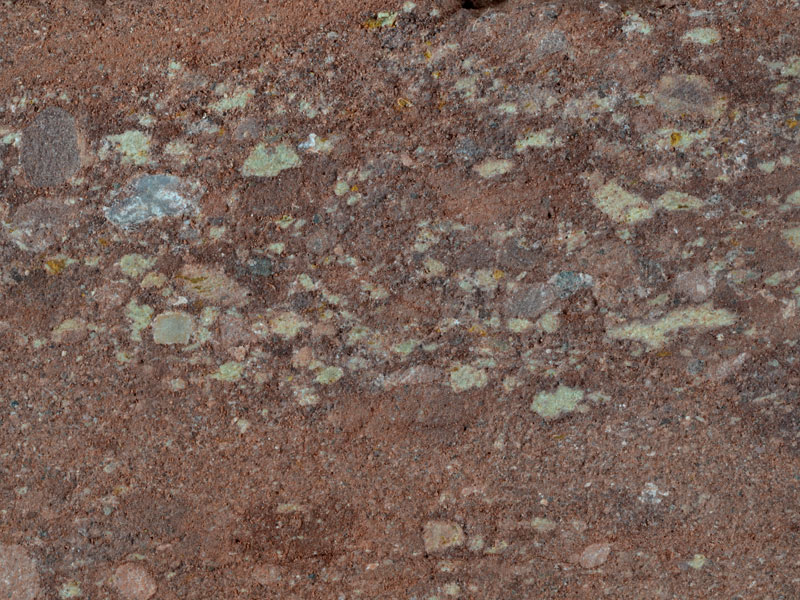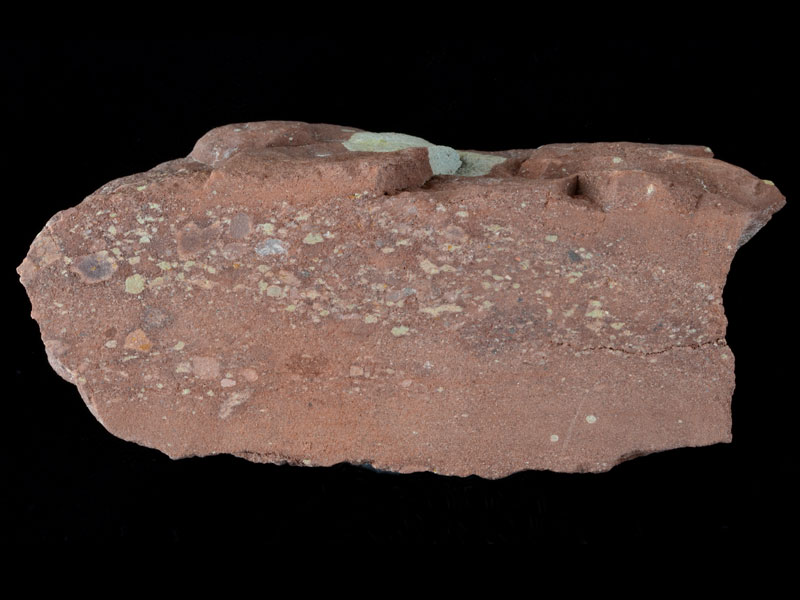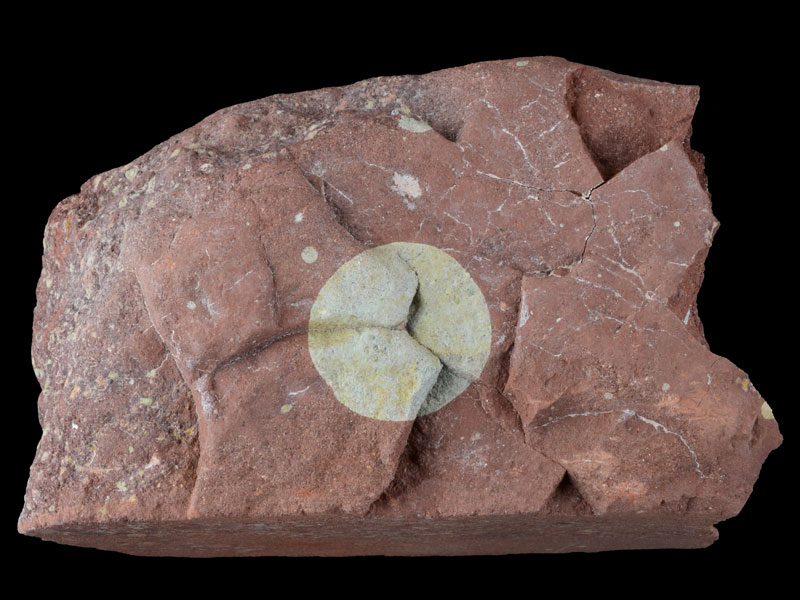
Fact sheet
This sample is a volcanic tuff from The Sisters, a small volcanic plug near the town of North Berwick, East Lothian, Scotland. The tuff is Carboniferous in age, appears red in the field, and underlies basaltic lava flows. A sequence of these rocks is well exposed on the shoreline at low tide. The backdrop to the location is North Berwick Law, a phonolitic trachyte plug which reaches a height of 613ft (187 m). Off shore is another phonolite plug - Bass Rock – famous for its gannet colony.
The thin section reveals banding on a small scale with grading of the clasts and fragments, which appears to indicate that the tuff is at least partially reworked and water lain. It is perhaps better regarded as a volcaniclastic sediment. The thin section contains one large clast of altered glass over 5 mm in length, and several others glass rich clasts on the left hand side of the section. The remainder of the section is composed of angular fragments of quartz, feldspar and glass-rich rock fragments in bands in an altered matrix. The fragment grain sizes in different bands range from tens to hundreds of microns.
The United Kingdom Virtual Microscope (UKVM) collection consists of igneous, sedimentary and metamorphic rocks from around the UK.
It is intended as a teaching resource, helping to tell the story of the common rock types and how they form, and reflecting the history of the UK at the margins of the continent of Europe. The collection is a series of teaching sets, for example igneous rocks from the North Atlantic Igneous Province and SW England; high-temperature metamorphic rocks from Scotland and low-temperature metamorphic rocks from Wales; and sedimentary rocks, including English limestones and sandstones.









